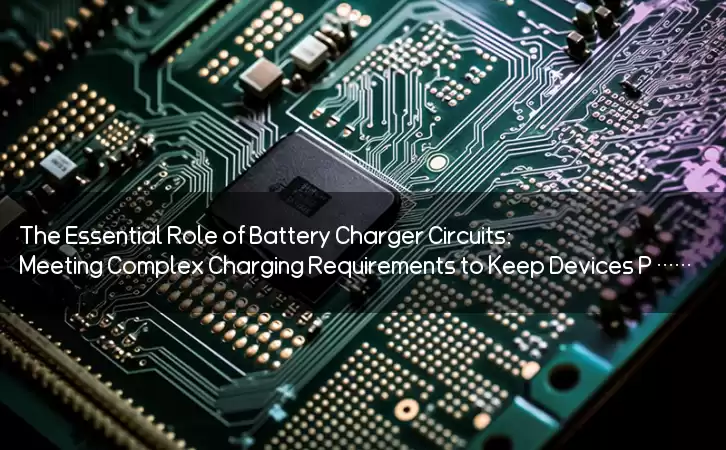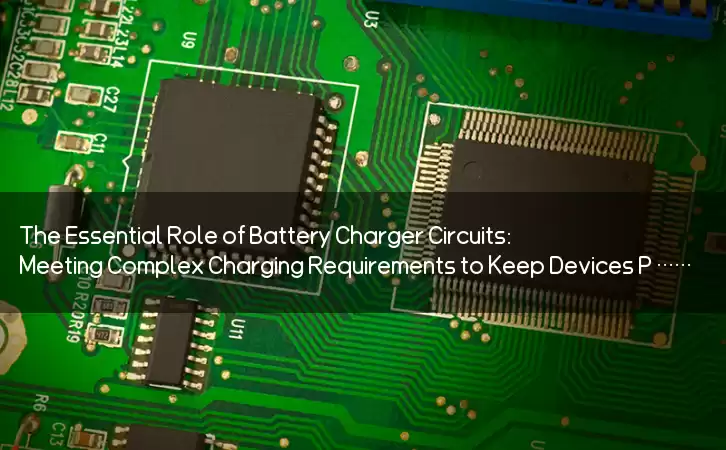Information Center
The Essential Role of Battery Charger Circuits: Meeting Complex Charging Requirements to Keep Devices Powered and Protected
Published:2023-07-19 10:34:11 Author:Green WCND Views:85A battery charger circuit is an essential component that is used to recharge batteries and maintain their charge levels. The circuit varies depending on the type of battery being used, but the basic principle is the same: to convert the alternating current (AC) from the power supply into direct current (DC) to charge the battery.

The most common type of battery chargers are those used for lead-acid batteries. This type of battery is commonly found in cars, motorcycles, boats, and other vehicles. The charger circuit uses a transformer to increase or decrease the voltage of the AC supply to the required level. The AC voltage is then rectified by a diode and smoothed by a capacitor to produce a DC voltage with low ripple.

The charging process for lead-acid batteries can be divided into three stages: bulk, absorption, and float. During the bulk stage, the charger applies a constant current to the battery to bring it up to about 80% of its capacity. In the absorption stage, the charger applies a constant voltage to the battery to maintain the charge level and allow the remaining 20% of the capacity to be filled. In the float stage, the charger reduces the voltage to a lower level to maintain the battery’s charge level without overcharging it.
Another type of battery charger circuit is used for lithium-ion batteries. This type of battery is commonly found in smartphones, laptops, and other portable electronic devices. Lithium-ion batteries require a more complex charging circuit than lead-acid batteries because they are sensitive to overcharging, undercharging, and high temperatures.
The charging process for lithium-ion batteries can also be divided into three stages: precharging, constant current, and constant voltage. During the precharging stage, the charger applies a low current to the battery to bring it up to a safe voltage level. In the constant current stage, the charger applies a constant current to the battery to charge it up to about 70-80% of its capacity. In the constant voltage stage, the charger reduces the current and maintains a constant voltage to fill the remaining capacity of the battery.
The design of a battery charger circuit can be challenging due to the complex charging requirements of different types of batteries. The circuit must be designed to provide the correct charging currents and voltages, ensure safe operation, and protect the battery from overcharging, undercharging, and short circuits. Additionally, the circuit should have a low standby power consumption to minimize energy waste.
In conclusion, battery charger circuits play an important role in keeping our portable devices and vehicles charged and ready for use. The choice of circuit depends on the type of battery being used and its charging requirements. The design of a battery charger circuit requires careful consideration of the charging process, safety, and efficiency to ensure optimal performance and longevity of the battery.
Power Adapter Design and Customization Guide for Portable Electric KettlesI. Common Design Types for Portable Electric Kettle Power AdaptersPortable electric ke···
I. Common Design Types of Power Adapters External Independent Type (Most Common) Design: A standalone adapter (e.g., "black brick") connected to the p···
Handheld Vacuum Cleaner Power Adapter Selection GuideIntroductionHandheld vacuum cleaners have become a mainstream tool for household cleaning due to their port···
Drill Power Adapter Selection Guide.drill-container { font-family: Arial, sans-serif; line-height: 1.6; max-width: 800px; margin: 0 auto; padding: 20px; } .dril···





